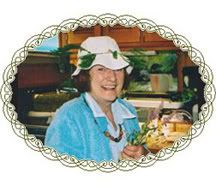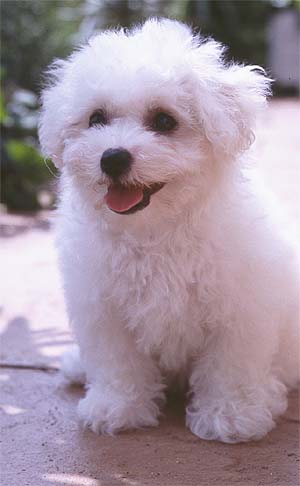My first memory of school was tripping over my feet when I tried to skip in kindergarten. I was pigeon-toed and had to wear special ‘ugly’ shoes. They had inside corrective soles and outside were slanted soles on the bottom of the shoes that were designed to correct my weight distribution. I exercised every day. I walked on the outsides of my feet on a line marked on the floor and curled a pencil under my toes. I never did figure out what the pencil exercise was supposed to cure. But I regularly did all the exercises I was instructed to do in hopes that one day I’d be able to walk like the other little girls. I fantasized about wearing pretty black patent leather Baby Janes with one delicate thin strap that fastened cloud-like shoes to my feet. By contrast the ones I wore were brown army boots that laced up well above my ankles.
The first time I tried to skip like the rest of my class, I fell flat on my face and they all laughed at me. Mrs. McKie, the teacher, made them stop. She asked me to stay after class and tried to teach me how to skip, but I just couldn't master it without falling down again no matter how hard I tried. She said, “Well how ‘bout we try skipping with just one foot?”
“Wow!” Much to my surprise, I could skip with one foot without tripping.
It must have looked weird, with one foot shuffling across the floor and the other one going up and down. But her eyes sparkled, and she said, “Sylvia, you’re my only student that skips with only one foot, the rest of the class has to use two.”
I played hooky the next day and the school called the truant officer. He came and I hid under the bed. Granny and the truant officer got brooms and poked them under the bed, but I was small enough that I had managed to get above the floor and was between the springs and the mattress. I can’t recall how long I was up there, but I did finally come down. The truant officer had waited for me. He escorted me to school that morning.
When I got there it was time for skipping—the reason I had dreaded going that morning. Mrs. McKie said to my fellow classmates. “Sylvia and I practiced yesterday and I want the rest of you to see how one-foot skipping is done.”
Feeling like an elephant with one of its leg in a sling, I demonstrated how one-foot skipping was done thinking I’d be laughed at again. She clapped when I was finished and the rest of the class joined in with their applause.
I never forgot the kindness that kindergarten teacher and my classmates had shown to me that day. I hadn’t been fooled that skipping with one foot was an accomplishment—all I had wanted was to be like them and not be made an object of pity or laughter. It wasn’t possible in kindergarten to stop wearing the big clunky shoes or not do the exercises, because my feet weren’t capable of doing anything except point the way they did. I was able to jump rope. Not having the toes point outward hadn’t prevented me from participating in that childhood game. Mrs. McKie was an older teacher with white hair and blue eyes like Granny. Lucky me! Now there were two people on my side, both of whom were kind. School and my friends were a great place!
#
The following year I had an equally wonderful teacher.
It was super to have been a ‘Bluebird’ in my grade one class. There were three other groups of birds: Cardinals, Robins, and Chickadees. I admit to hungering for and enjoying the reward of gold stars from my raven-haired young teacher. Miss Taylor’s deep brown eyes were set in an oval face devoid of lines. The dresses she had worn often were in soft pastels that paired with her calm voice.
Spot, Dick and Jane were the characters in my reader. “See Dick, See Jane, See Spot, See Dick Run. See Jane Run. See Spot Run.” The cover had been dark green, ‘Dick and Jane’ were printed on the cover along with the illustrations of the two characters and animals to the right and left of orange stripes. We also received a lined exercise book with a plain, light, kraft cover for arithmetic and printing. The school supplied our pencils; they were bigger than the ones available at the stores. I can't recall those large pencils had an eraser on the end or that we had a ruler. Everything was kept inside our wooden desks, the top of which was hinged. In later grades, the desks had an inkwell in the top-right corner.
Dick was a boy without the double meaning of his name from a modern world and there was no Tarzan for Jane. Spot was their dog. Dick had black hair and Jane’s was blonde. Spot was the combination of white with black spots. (the books came to be known as the Elson-Gray Readers). We practiced daily sounding out words and learning the difference between long and short vowels as well as hard and soft consonants.
When it was the Bluebirds’ turn to read aloud from our Dick and Jane readers, we sat in a circle on small wooden chairs. There were other books on low shelves that we could look at the pictures and try to sound out the words if we didn’t know what they were. To me, it was a fun to open them up and see what was inside them.
One afternoon, Miss Taylor asked me to go to the library with her after school. She took my hand. Her hand was much bigger than mine was, smooth and soft to the touch. When we arrived at the library, there were stacks and stacks of books—I’d never seen so many books in one place. They towered over me. On the lower shelves were books for children of my age. I reached out and peeked inside one of them. Miss Taylor said, “You do know a library card lets you take a book home don’t you?”
“Really? I can take this book home?”
Miss Taylor looked at the title, which I don’t remember what it was, then put it back on the shelf and said, “Well, perhaps we should ask the librarian which book is suitable for you to read.”
“Granny, look what I have” I bubbled with glee when I got home that afternoon. “Isn’t it wonderful, I can read this at home and all the books are free as long as I get them back by the date on the library slip at the back.”
“Make sure you do,” was her reply as she turned back to the ingredients she was mixing in her special yellowware bowl she used for making bread, cookies, Yorkshire puddings and other yummy things.
Now both of us had something we enjoyed doing. Granny loved to cook and I liked to read. She never ran out of great things to make and my life would be filled with millions of stories.
“What a great world it was—there was something in it for everyone.”
#
I had not outgrow being pigeon-toed by grade three, but that year did find me with a nasty teacher. She placed me in grade four then told me I was too small for the higher grade and made me go back to grade three. In retrospect, I really was smaller in height and skipping the grade would have isolated me socially in the later grades. In grade eight, there was only one student shorter than I was. As an adult, my final height was 5’1”.
On my way home one day, who should appear beside my side but the cantankeous teacher from grade three. She drew alongside me and said, “Sylvia, why do you walk like that?”
The tears welled in my eyes.
“Walk like this!” she barked.
I looked down and had to stuff my hand in my mouth to stop from laughing. Her toes pointed outward like a duck!
She went her way a block later and I rushed home, took off my ugly boots and threw them out the kitchen door. “Granny, I’m not ever, ever going to wear those ugly things again. If you don’t buy me a pair of black patent leather Baby Jane shoes I’m not going to school EVER again!”
I refused to put the boots back on to go to the shoe store and went with her in my yellow rain boots. I just didn’t care—I was fed up with people laughing at my orthodepedic boots and I knew no matter how hard I practiced nothing was going to straighten my feet.
I did get my dream shoes and every day I forced myself to walk along the railroad tracks on my way to and from school with one foot in front of the other doing my very best to keep my toes lined up with my arches and heels. By the end of the year, with the lighter shoes, I was able to walk well enough that no one was laughing any more.
“Thanks to you, you old battle-ax, who made fun of the way I walked when your way of walking was an old Victorian method that had gone out of style a generation before.”
She was the last straw on a tall heap!
#
When I got to grade nine, there had been a discussion with my family whether to take the commercial or the art course. Learning to type had come easy for me and I had taught myself using an old Remington manual typewriter in grade six. I hadn’t been positive I had enough talent that I could earn my living being an artist. Electing to take the commercial course was a sure way to get the skills that would enable me to support myself. Wise choice. But the commercial course was super boring and I quit after grade ten. I worked for seven years, took two grade thirteen classes in English and History and wrote an aptitude test before I could indulge my passion for learning again. I was admitted as an adult student to the University of Western Ontario in 1969.
1970 did not mark the end to my tribulations with education.
skip to main |
skip to sidebar


Eski-Poo
Labels
- based on facts (3)
- Building Retirement Home (13)
- Children's Story (1)
- Fiction (1)
- Flash Fiction (5)
- Humour (3)
- Non Fiction (1)
- other diaries (1)
- Pictorial Diaries (4)
- Poetry (4)
- Short Stories: Autobiographical (2)
- Short Stories: Autobiographical (2)
- Short Stories: Fiction (4)
- Writer's Journal: Publication Resources (1)
- Writer's Journal: Resources (1)
- Writer's Journal: Publication Resources (1)
- Writer's Journal: Resources (2)
- Writers Journal: Political (1)
Interests

- Sylvia (cyber monikers: canuck, and sylley2000)
- Grand Bend, Ontario, Canada
- Sailing, RVing, Digital Photography, Creative Writing, Interior Decorating, Painting: Oils/Acrylics & Watercolours, Appliqué Quilting, Reading, Cooking, Square Foot Gardening, Blogging and many more.
Frosty

Eski-Poo